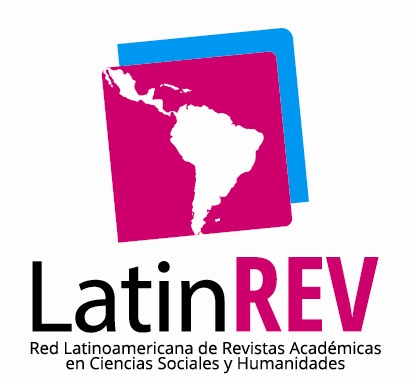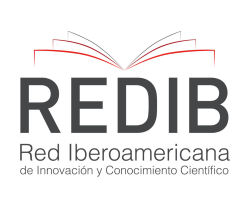The impact of implementing the Computer-Assisted Language Learning (CALL) approach using the Nearpod platform in improving phrasal verbs vocabulary among adult learners at the virtual institute Centro de Matemáticas e Idiomas Segura in San Isidro de Alaju
Resumen
This study investigates the impact of implementing the Computer-Assisted Language Learning (CALL) approach using the Nearpod platform to improve phrasal verb vocabulary among adult learners at Centro de Matemáticas e Idiomas Segura (CMI Segura) in San Isidro de Alajuela during the third quarter of 2024. The study involved 25 adult participants and employed a mixed-methods approach, including a pre-test, two observation checklists, a questionnaire, and a post-test. The pre-test results highlighted a need for focused practice in phrasal verbs, confirming initial knowledge gaps among learners. Following the intervention, the post-test demonstrated a notable improvement, with 75% of participants meeting the targeted proficiency level. Observations confirmed high engagement and autonomy, with the Nearpod platform facilitating immediate feedback and interactive learning. The results suggest that Nearpod, as a CALL tool, effectively enhances engagement, promotes vocabulary acquisition, and supports diverse instructional approaches. The study highlights the importance of contextual and autonomous learning in mastering complex vocabulary, aligning with recent CALL research. Recommendations include incentivizing attendance, fostering student autonomy, introducing phrasal verbs prior to CALL-based activities, and expanding sample size in future studies to strengthen findings.
Descargas
Citas
https://www.researchgate.net/publication/353323029_Computer-Assisted_Language_Learning_CALL_for_4th_Year_EFL_Student_Teachers
Abdullah, A., Yahaya, M. F., & Mat Isa, N. (2019). The impact of Nearpod Interactive Learning Platform in Quality Accounting Education for Sustainable developmentent. SSRN Electronic Journal, 1–9. https://doi.org/10.2139/ssrn.3563907
Abid Thyab, R. (2019). Phrasal verbs in English as a second/foreign language. Arab World English Journal, 10(3), 429–437. https://doi.org/10.24093/awej/vol10no3.30
Alahmadi, N. S. (2019). The impact of computer-assisted language learning (CALL) on grammar acquisition by Saudi learners. International Journal of Language & Linguistics, 6(4), 151–158. https://doi.org/10.30845/ijll.v6n4p19
Algaddari, Naji. (2021). The Importance of Using Computer Assisted Language Learning (CALL) in Learning and Teaching English Language Skills. 198-205. .العلمية المنارة مجلة 10.37376/asj.vi3.1009.
Alghamdi, F. (2020). Trends in Educational Technology. American Journals Publishing Center - Publish Article In the United States, 8(3), 15–23.
https://www.researchgate.net/publication/345759413_Trends_in_Educational_Technology
Alqahtani, M. (2015). The importance of vocabulary in language learning and how to be taught.
International Journal of Teaching and Education, III (3), 21–34. https://doi.org/10.20472/te.2015.3.3.002
Ariñez, C. (2018). Guide: Final graduation works, theses, and thesis in social sciences. Direction of Methodological Investigation, Universidad Hispanoamericana.
Badem, N., & Şimşek, T. (2021). A comparative corpus-based study on the use of phrasal verbs by Turkish EFL learners and L1 English speakers. Advances in Language and Literary Studies, 12(6), 55–66. https://doi.org/10.7575/aiac.alls.v.12n.6.p.55
Bandura, A. (2002). Growing primacy of human agency in adaptation and change in the electronic era. European Psychologist, 7(1), 2–16. https://doi.org/10.1027//1016-9040.7.1.2
BENRABAH, B. (2019). Language proficiency through Vocabulary Development: A Framework. Arab World English Journal, (1), 78–85. https://doi.org/10.24093/awej/chief1.7
Benyo, A. (2020). CALL in English language teaching. International Journal of Advanced Science and Technology, 29(3), 1390-1395.
Centro de Matemáticas e idiomas Segura. Centro de Matemáticas e Idiomas Segura. (2024, September 26). https://cmisegura.com/
Chen, L., Chen, P., & Lin, Z. (2020). Artificial Intelligence in education: A Review. IEEE Access, 8, 75264–75278. https://doi.org/10.1109/access.2020.2988510
Cozma, M. (2015). The challenge of teaching English to adult learners in today’s world.
Procedia - Social and Behavioral Sciences, 197, 1209–1214. https://doi.org/10.1016/j.sbspro.2015.07.380
Dayal, S. (2023). Online education and its effect on teachers during COVID-19—a case study from India. PLOS ONE, 18(3). https://doi.org/10.1371/journal.pone.0282287
Delgado, A., Wardlow, L., O’Malley, K., & McKnight, K. (2015). Educational Technology: A review of the integration, resources, and effectiveness of technology in K-12 Classrooms. Journal of Information Technology Education: Research, 14, 397–416. https://doi.org/10.28945/2298
Enayati, F., & Pourhosein Gilakjani, A. (2020). The impact of Computer Assisted Language Learning (CALL) on Improving Intermediate EFL learners’ vocabulary learning.
International Journal of Language Education, 4(1), 96–112. https://doi.org/10.26858/ijole.v4i2.10560
English phrasal verbs in use second edition: Cambridge University Press spain. Cambridge.es. (n.d.). https://www.cambridge.es/en/catalogue/grammar-vocabulary-and-pronunciation/vocabulary/english-phrasal-verbs-in-use-second-edition#:~:text=There%20are%20over%205%2C000%20phrasal,and%20written%20communication%20in%20English
García, A. G. (2022, February 18). The impact of games and songs as part of cloud computing activities in the learning vocabulary process within the efl enviroment in nine grades of Liceo Jose Marti during the i semester of 2022 (thesis). Retrieved from http://13.87.204.143/xmlui/handle/123456789/7046
Grant, C., & Osanloo, A. (2014). Understanding, selecting, and integrating a theoretical framework in dissertation research: Creating the blueprint for your “house.” Administrative Issues Journal Education Practice and Research, 4(2). https://doi.org/10.5929/2014.4.2.9
Guzmán, M. (2019, July 12). Using Techniques To Improve English Vocabulary Acquisition To Sixth Graders Adult Students At Capacitación Obrera Primary Public Night School In Heredia, From March To July, 2019. (thesis). Retrieved from http://13.65.82.242:8080/xmlui/handle/cenit/5655
Hakami, M. (2020). Using Nearpod as a tool to promote active learning in Higher Education in a BYOD learning environment. Journal of Education and Learning, 9(1), 119–126. https://doi.org/10.5539/jel.v9n1p119
Hasanova, N., Abduazizov, B., & Khujakulov, R. (2021). The main differences between teaching approaches, methods, procedures, techniques, styles, and strategies. JournalNX: A Multidisciplinary Peer Reviewed Journal, 7(2), 371–375.
Herawati, R., Tjahjono, H. K., Qamari, I. N., & Wahyuningsih, S. H. (2022). Teachers’ willingness to change in adapting to online learning during the COVID-19 pandemic. Jurnal Cakrawala Pendidikan, 41(2), 425–436. https://doi.org/10.21831/cp.v41i2.43233
Jain, V. (2021). Nature & Design of Mixed Method Research. Research Gate. https://www.researchgate.net/publication/350855772_Nature_Design_of_Mixed_Method_Research
Kasumu, R., & Abe. (2018). New technology tool (Resources) for instructional delivery in classrooms. International Journal of Multidisciplinary Research and Development, 5(6), 147–150. https://www.researchgate.net/publication/370376399_New_technology_tool_Resources_for_instructional_delivery_in_classrooms
Khoiriyah, K. (2020). Call and SLA theory: Developing a framework to analyze web-based materials for teaching listening skills. IDEAS: Journal on English Language Teaching and Learning, Linguistics and Literature, 8(1). https://doi.org/10.24256/ideas.v8i1.1296
Lelissa, T. (2018). RESEARCH DESIGN AND METHODOLOGY (thesis). Research Gate.
Retrieved from
https://www.researchgate.net/publication/329715052_CHAPTER_FIVE_RESEARCH_DESIGN_AND_METHODOLOGY_51_Introduction_Citation_Lelissa_TB_2018_Research_Methodology_University_of_South_Africa_PHD_Thesis
Liu, X. (2015). The effectiveness of using call environment on reading skills of English learners.
Proceedings of the 2015 3rd International Conference on Management Science, Education Technology, Arts, Social Science and Economics. https://doi.org/10.2991/msetasse-15.2015.217
Mirani, J. I., Lohar, S. A., Jat, A. R., & Faheem, M. (2019). A review of Computer-Assisted Language Learning (CALL): Development, challenges, and future impact. Education and Linguistics Research, 5(1), 37. https://doi.org/10.5296/elr.v5i1.14515
Molina-Carmona, R., & Llorens-Largo, F. (2020). Gamification and advanced technology to enhance motivation in education. Informatics, 7(2), 1–5. https://doi.org/10.3390/informatics7020020
Naik, A. S., Kathavate, P. N., & Metagar, S. M. (2022). Nearpod: An effective interactive ICT tool for teaching and learning through google meet. IOT with Smart Systems, 269–276. https://doi.org/10.1007/978-981-16-3945-6_26
Naumoska, A., Rusevska, K., Blazhevska, A., & Stojanovska, M. (2022). Nearpod as a tool for increasing students’ motivation for learning chemistry. International Journal of Education and Learning, 4(1), 89–99. https://doi.org/10.31763/ijele.v4i1.616
Nazeer, I., Mukhtar, S., & Azhar, B. (2023). Exploring the Effectiveness of Vocabulary Acquisition Strategies in Foreign Language Learning, 7(3), 1–14. https://www.researchgate.net/publication/373776200_Exploring_the_Effectiveness_of_Vocabulary_Acquisition_Strategies_in_Foreign_Language_Learning/citations
Ngoc Tu, T. P., & Thao, T. Q. (2019). The use of phrasal verbs in English language research proposals by Vietnamese M.A. students. VNU Journal of Foreign Studies, 35(4), 114–
129. https://doi.org/10.25073/2525-2445/vnufs.4399
Nisma, A. (2016). The Use of Vocabulary-Games in Improving Children’s Vocabulary in English Language Learning, 12(1). https://media.neliti.com/media/publications/197194- EN-the-use-of-vocabulary-games-in-improving.pdf
Nurawalia, A. (2021). EFFECTIVENESS OF USING CALL FOR TEACHING WRITING.
Premise : Journal of English Education and Applied Linguistics, 10(1), 101–123. https://ojs.fkip.ummetro.ac.id/index.php/english/article/view/3565/pdf
Ozfidan, B., & Burlbaw, L. (2020). Teachers’ perspectives and attitudes towards computer- assisted language learning (CALL). Revista de Cercetare Si Interventie Sociala, 71, 9–24. https://doi.org/10.33788/rcis.71.1
Pateşan, M., Balagiu, A., & Zechia, D. (2019). Vocabulary acquisition. International Conference KNOWLEDGE-BASED ORGANIZATION, 25(2), 300–304. https://doi.org/10.2478/kbo-
2019-0098
Pawar, N. (2020). Type of Research and Type Research Design. KD Publications, 46–57. https://www.researchgate.net/publication/352055750_6_Type_of_Research_and_Type_Research_Design
Phrasal verbs. LearnEnglish. (2024, May 22). https://learnenglish.britishcouncil.org/grammar/b1-b2-grammar/phrasal-verbs
Pokrivčáková, S. (2014). Call and teaching grammar. CALL and Foreign Language Education: E-Textbook for Foreign Language Teachers, 38–41. https://doi.org/10.17846/call.2014.38-41
Polat, M. (2017). Call in context: A brief historical and theoretical perspective. Issues and Trends in Educational Technology, 5(1), 17–23. https://doi.org/10.2458/azu_itet_v5i1_polat
Puji, S. A. (2022). THE ANALYSIS OF PHRASAL VERBS IN THE TED TALK SPEECH “THE SCIENCE BEHIND HOW PARENTS AFFECT CHILD DEVELOPMENT” BY YUKOMUNAKATA (thesis). Retrieved from
http://repository.radenintan.ac.id/19868/1/PERPUS%20PUSAT%20BAB%201%20DAN%202.pdf.
Raheem, B. R., & Ghafar, Z. N. (2023). The major challenges and opportunities of e-learning for teachers and students in covid-19 Panadamic: A descriptive study. Journal of Social Science (JoSS), 2(7), 639–653. https://doi.org/10.57185/joss.v2i7.85
Rashid, Md. H., Lan, Y., & Hui, W. (2022). The importance of vocabulary in teaching and learning in Applied Linguistics. Linguistics and Culture Review, 6, 1548–1557. https://doi.org/10.21744/lingcure.v6ns2.2177
Reid, E. (2014). Call and developing intercultural communicative competence " "call and developing intercultural communicative competence. CALL and Foreign Language Education: E-Textbook for Foreign Language Teachers, 05–106. https://doi.org/10.17846/call.2014.76-82
Riguel, E. (2015). Phrasal verbs: Usage and acquisition. ATHENS JOURNAL OF PHILOLOGY, 1(2), 111–126. https://doi.org/10.30958/ajp.1-2-3
RODRÍGUEZ-PUENTE, P., & OBAYA-CUELI, M. (2022). Phrasal verbs in early modern English spoken language: A colloquialization conspiracy? English Language and Linguistics, 26(4), 807–831. https://doi.org/10.1017/s1360674322000065
Sahu, N., & Soni, P. (2022). . ABS Books and Publishers. 2024, https://www.researchgate.net/publication/375640906_Emerging_Trends_and_Research_in_Education_Technology
Salazar, Y. (2023, November 24). The effectiveness of using educational games based on Total Physical Response method to reinforce student’s vocabulary in first grade at Guachipelin school, during the I quarter of 2023. (thesis). Retrieved from http://13.87.204.143/xmlui/handle/123456789/7965.
Santos, J., & Vélez, M. (2021). Using Classdojo to motivate kids participation in the EFL online classes during the COVID-19 pandemic: A case study. AtoZ: Novas Práticas Em Informação e Conhecimento, 10(2), 58–65.
Sedaghatkar, M. (2017). The effect of computer-assisted language learning (CALL) on immediate and delayed retention of vocabularies in general English course. International Journal of Applied Linguistics and English Literature, 7(1), 231–238. https://doi.org/10.7575/aiac.ijalel.v.7n.1p.231
Setiyadi, B. (2020). TEACHING ENGLISH AS A FOREIGN LANGUAGE. http://repository.lppm.unila.ac.id/23179/1/Teaching%20English%20as%20a%20Foreign%20Seccond%20edition-final%20(2).pdf
Showkat, N., & Parveen, H. (2017). Non-Probability and Probability Sampling. https://www.researchgate.net/publication/319066480_Non- Probability_and_Probability_Sampling
Sphero Team. (2022, November 30). 25 technology tools for the classroom. Sphero. Retrieved from https://sphero.com/blogs/news/technology-tools-for-the-classroom#:~:text=A%20technology%20tool%20is%20an,hybrid%2C%20or%20traditional%20learning%20environments
Tafazoli, D. (2021). Affordances of computer-assisted language learning in higher education: A qualitative inquiry. Research Gate.
https://www.researchgate.net/publication/359176081_Affordances_of_computer-assisted_language_learning_in_higher_education_A_qualitative_inquiry
Tan, L. (2014). Correlational study. In W. F. Thompson (Ed.), Music in the social and behavioral sciences: An encyclopedia (pp. 269-271). SAGE Publications.
Tugrul Mart, C. (2012). How to teach phrasal verbs. English Language Teaching, 5(6). https://doi.org/10.5539/elt.v5n6p114
Tulud, D. M. (2022). Computer Assisted Language Learning and speaking proficiency of Second language learners. Asia Pacific Journal of Social and Behavioral Sciences, 19, 53–64. https://doi.org/10.57200/apjsbs.v19i0.189
Vocabulary. (n.d.). Cambridge Dictionary. Retrieved 2024, from https://dictionary.cambridge.org/dictionary/english/vocabulary#google_vignette
Wiącek, M. (2024). Computer Assisted Language Learning (CALL). Taalhammer. https://www.taalhammer.com/computer-assisted-language-learning/
Yigitcan Badem, N., & Demiray Akbulut, F. (2019). A general view on utilization of Computational Technologies in Computer Assisted Language Learning (CALL). Education Reform Journal, 4(2), 35–53. https://doi.org/10.22596/erj2019.04.02.35.53
Zhang, P., & Graham, S. (2020). Learning vocabulary through listening: The role of vocabulary knowledge and listening proficiency. Language Learning, 70(4), 1017–1053. https://doi.org/10.1111/lang.12411
Zohaib, N. M. (2019). The importance of English phrasal verbs use in the business writing-A qualitative analysis on perceptions of non-native business students of Pakistan. Journal of Education and Practice, 10(6), 1–6. https://doi.org/10.7176/jep/10-6-01
Derechos de autor 2025 Luciana Molina Sánchez , Yanory Arguedas Carballo

Esta obra está bajo licencia internacional Creative Commons Reconocimiento 4.0.











.png)




















.png)
1.png)


